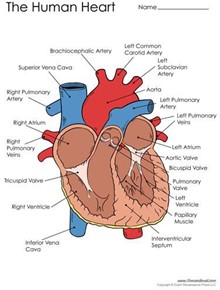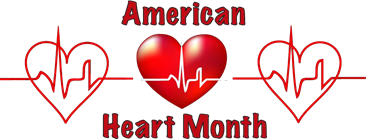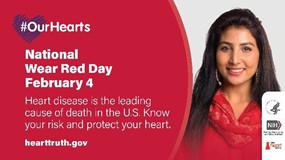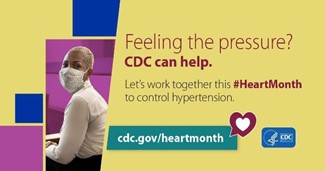The Division is committed to addressing barriers to health equity in communities disproportionately affected by cardiovascular disease.” …CDC
We know you’re busy! We can help. Use these toolkits developed by CDC to implement evidence-based hypertension control strategies.
 February is the month each year that the American Medical Association tries to bring our attention to heart health. It’s to our benefit to understand heart disease and what we can do to prevent it. From this illustration, you can see the heart is not only essential to life but it’s a very complicated process to keep it beating the way it should.
February is the month each year that the American Medical Association tries to bring our attention to heart health. It’s to our benefit to understand heart disease and what we can do to prevent it. From this illustration, you can see the heart is not only essential to life but it’s a very complicated process to keep it beating the way it should.
What is heart disease?
The term “heart disease” covers a lot of territory as it refers to several types of heart conditions. The “catch-all” phrase refers to coronary artery disease (CAD), which affects the blood flow to the heart. Decreased blood flow can cause
a heart attack. CAD is the most common heart condition in the United States.
What should you know about heart disease?

Approximately 659,000 people in the United States die from heart disease each year. . .
that’s 1 in every 4 deaths.1,2
Heart disease is sometimes called the “silent killer” as it may not have any symptoms and may not be diagnosed until a person experiences symptoms of a heart attack, heart failure, or arrhythmia. When this happens, you may experience these symptoms:
- Heart attack: Chest pain or discomfort, upper back or neck pain, indigestion, heartburn, nausea or vomiting, extreme fatigue, upper body discomfort, dizziness, and shortness of
- Heart failure: Shortness of breath, fatigue, swelling of the feet, ankles, legs, abdomen, or neck veins.
- Arrhythmia: Fluttering feelings (palpitations) in the
What are the risk factors for heart disease?
High blood pressure, high blood cholesterol, and smoking are key risk factors for heart disease. About half of people in the United States (47%) have at least one of these three risk factors.2 Several other medical conditions and lifestyle choices can also put people at a higher risk for heart disease, including:
How do heart disease and mental health disorders relate?
- Coronary Artery Disease
- Heart Attack
- Men and Heart Disease
- Women and Heart Disease
- Other Related Conditions
What is cardiac rehabilitation?
Cardiac rehabilitation (rehab) is an important program for anyone recovering from a heart attack, heart failure, or some types of heart surgery. A rehab team may consist of your health care team, exercise and nutrition specialists, physical therapists, and counselors or mental health professionals.
Cardiac rehab is a supervised program that includes
- Physical activity
- Education about healthy living, including healthy eating, taking medicine as prescribed, and ways to help you quit smoking
- Counseling to find ways to relieve stress and improve mental health
 More Information to support heart health.
More Information to support heart health.
References
- Centers for Disease Control and Prevention, National Center for Health Statistics. About Multiple Cause of Death, 1999–2019. CDC WONDER Online Database website. Atlanta, GA: Centers for Disease Control and Prevention; 2019. Accessed February 1, 2021.
- Virani SS, Alonso A, Aparicio HJ, Benjamin EJ, Bittencourt MS, Callaway CW, et al. Heart disease and stroke statistics—2021 update: a report from the American Heart Association. 2021;143:e254–e743.
Arthur: Judy Harrison, (judy@pom.care)











